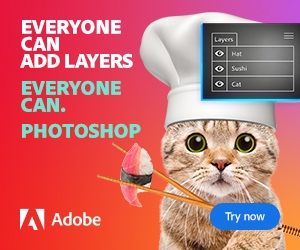Video editing is an essential skill for anyone in the creative industry today. Whether you’re a YouTuber, a content creator, or a professional filmmaker, the ability to edit your videos efficiently and creatively is crucial. With the rise of video content across all social media platforms and websites, mastering video editing can open up countless opportunities. This guide will take you through the basics of video editing, introduce you to essential editing tools, and provide expert tips and techniques to help you improve your editing skills.
Understanding Video Editing
Video editing is the process of manipulating and rearranging video footage to create a final product that tells a story or conveys information in a compelling way. This process includes tasks such as cutting, trimming, and arranging clips, adding effects, synchronizing sound, and improving overall video quality. The goal of video editing is to create a seamless narrative or visual experience for the viewer.
In today’s digital age, video editing has become more accessible, with a wide range of software tools available for both beginners and professionals. Whether you want to create content for YouTube, Instagram, TikTok, or any other platform, mastering video editing can significantly enhance the quality of your work.
Essential Tools for Video Editing
The first step to becoming a proficient video editor is to choose the right editing software. The tool you choose will depend on your skill level, the complexity of your projects, and your budget. Below are some popular video editing tools used by professionals and beginners alike:
1. Adobe Premiere Pro
Adobe Premiere Pro is one of the most powerful and widely used video editing tools in the industry. It’s used by professionals to create high-quality video content. Premiere Pro offers a vast array of features, including multi-cam editing, advanced color grading, audio editing tools, and integration with other Adobe software like After Effects and Photoshop. While it’s on the more expensive side, the subscription-based model offers continuous updates and support.
2. Final Cut Pro X
Final Cut Pro X is Apple’s professional video editing software. Known for its smooth interface and powerful features, it’s ideal for Mac users. It has a unique magnetic timeline that helps simplify the editing process, and it supports a wide variety of video formats. Final Cut Pro X is an excellent choice for content creators who want to make professional videos without the steep learning curve of more complex software.
3. DaVinci Resolve
DaVinci Resolve is another popular tool that combines editing, color correction, audio post-production, and visual effects in one package. It’s known for its advanced color grading tools, making it a favorite among filmmakers. DaVinci Resolve offers a free version that includes most of the essential features, making it a great option for beginners.
4. iMovie
If you’re a beginner looking for a simple and user-friendly editing tool, iMovie is a great choice. It’s free for Mac users and provides all the basic editing tools you need to create clean and professional-looking videos. iMovie supports drag-and-drop functionality and allows you to easily import footage, trim clips, and add transitions and effects.
5. HitFilm Express
HitFilm Express is a free video editing software that’s ideal for users who want to create high-quality videos without spending money on premium tools. It includes a wide range of features, such as visual effects, color correction, and 3D editing tools. HitFilm Express is particularly popular among YouTubers and content creators who need both video editing and visual effects in one package.
Basic Video Editing Techniques
Now that you’re familiar with some popular video editing tools, let’s dive into some basic editing techniques that every editor should know:
1. Cutting and Trimming
Cutting and trimming are the most fundamental techniques in video editing. Cutting allows you to remove unnecessary footage, while trimming enables you to shorten or lengthen clips. By using the cut tool, you can create seamless transitions between scenes and make your video more concise.
2. Adding Transitions
Transitions are used to move between scenes or clips smoothly. Whether you’re switching from one shot to another or introducing a new segment, transitions help maintain the flow of your video. Some common types of transitions include fades, wipes, and dissolves. However, don’t overuse transitions; subtlety is key.
3. Color Grading and Correction
Color grading and correction are vital for improving the overall visual quality of your video. Color correction involves adjusting the colors to match the natural tones of the scene, while color grading is used to give the video a particular look or mood. Software like DaVinci Resolve and Adobe Premiere Pro offer advanced color grading features to help elevate your content.
4. Audio Editing
Good audio is just as important as good video. A poorly mixed audio track can detract from the overall impact of your video. Audio editing includes adjusting the volume levels, adding background music, and synchronizing sound effects or voiceovers. Most video editing tools come with built-in audio editing features, so you can easily clean up and enhance the audio in your video.
5. Adding Text and Titles
Adding text to your video can help emphasize key points or provide additional context. Titles, captions, and lower thirds are all common forms of text used in videos. Most video editing software provides built-in text tools that allow you to customize fonts, sizes, and colors to match your video’s style.
Advanced Video Editing Tips
Once you’ve mastered the basics, you can start experimenting with more advanced editing techniques to make your videos stand out:
1. Using Effects and Filters
Effects and filters can add a creative flair to your videos. From glitch effects to cinematic looks, adding the right effect can enhance the mood or storytelling in your video. However, it’s essential not to overdo it. Use effects sparingly and ensure that they complement the story you’re trying to tell.
2. Motion Graphics and Animations
Motion graphics and animations can elevate your video by adding dynamic visuals. Software like After Effects is widely used for creating motion graphics, but many video editors also offer simple animation tools. These can be used to animate text, logos, and even entire scenes.
3. Multicam Editing
Multicam editing is useful when you have multiple camera angles of the same event or scene. It allows you to sync up all the footage and switch between camera angles in real time. This technique is especially valuable for live performances, interviews, and events.
4. Green Screen (Chroma Keying)
Chroma keying is a technique that allows you to replace a green (or blue) background with a different scene or image. This technique is often used in newsrooms, films, and special effects. With green screen technology, you can place your subjects in any location, no matter where the footage was shot.
Conclusion
Video editing is an invaluable skill in today’s digital world. Whether you’re a beginner or a seasoned professional, mastering video editing tools and techniques is crucial for creating high-quality videos that engage your audience. From selecting the right software to learning the essential editing techniques, the journey to becoming a proficient video editor requires practice and creativity.
Remember, the more you experiment with different editing techniques and styles, the more you’ll refine your skills. With the right tools and a bit of dedication, you’ll be able to create videos that captivate your audience and take your content to the next level.




